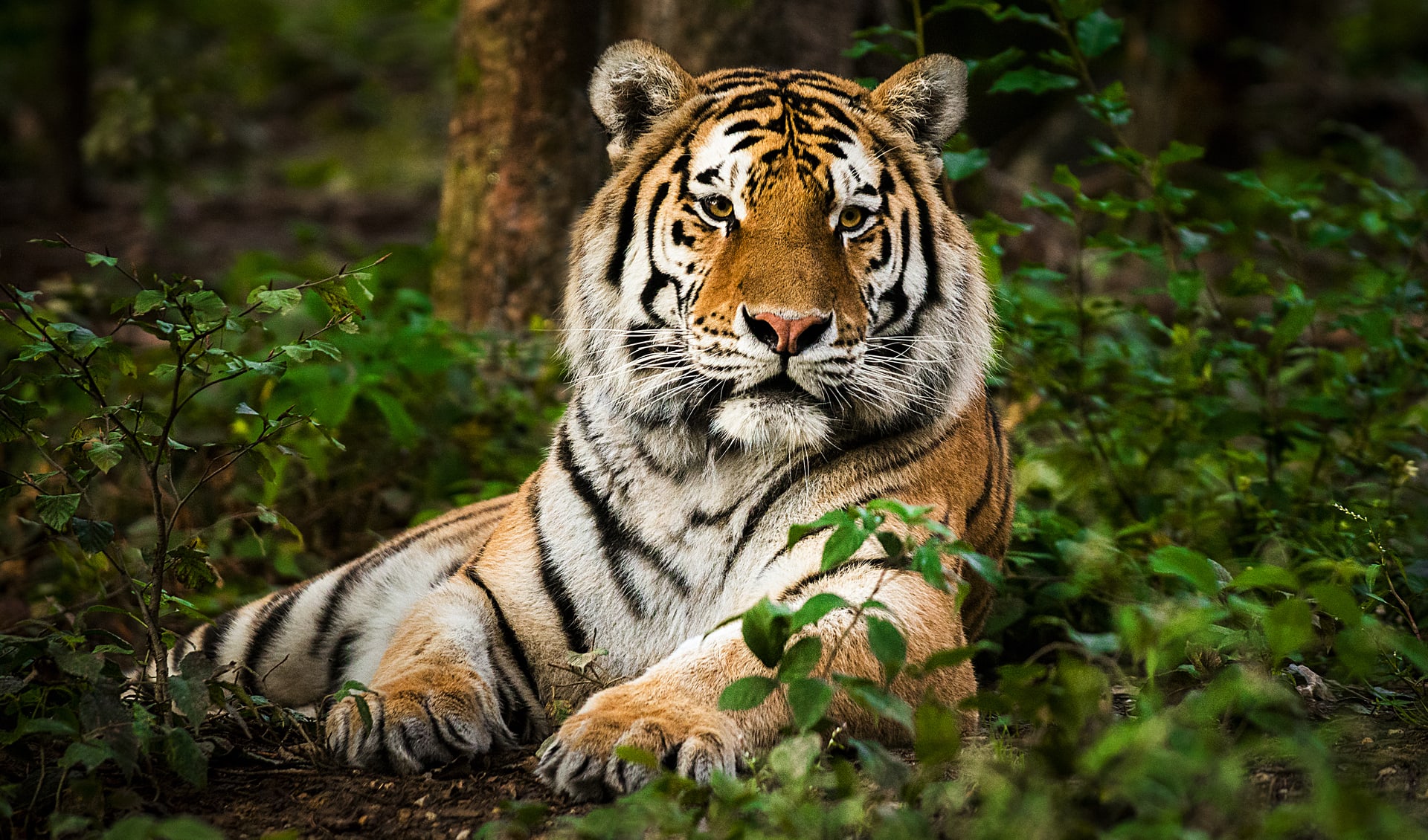With its iconic black-and-white coat and gentle demeanor, the giant panda has captured people’s hearts worldwide and become a symbol of conservation efforts for endangered species. This majestic bear, native to China, presents a unique case of dietary specialization within the Carnivora order, relying almost exclusively on bamboo for nutrition. Despite its classification as a carnivore, the Giant Panda’s diet and lifestyle have adapted over millions of years to accommodate the fibrous, low-nutrient bamboo, making it a fascinating subject of study in evolutionary biology and conservation science.
Giant Pandas are easily recognizable by their distinct coloration, with bold black patches around their eyes and ears and across their round bodies, contrasting with their white fur elsewhere. These features make them one of the most beloved animals and serve as camouflage in their natural forest habitats. Despite having the digestive system of a carnivore, including pointed canines, Giant Pandas have evolved a diet that consists primarily of bamboo. Due to the plant’s low caloric value, they consume vast quantities of bamboo daily to meet their nutritional needs. This dietary specialization requires them to spend up to 14 hours a day feeding, with the rest of their time largely devoted to resting and conserving energy.
Historically, the Giant Panda’s range covered much of southern China, extending north of Beijing and into parts of Southeast Asia. Today, however, their habitat is restricted to six mountain ranges in the Chinese provinces of Sichuan, Shaanxi, and Gansu. The primary threats to their survival include habitat fragmentation and degradation, which have confined panda populations to high elevations in small, isolated forest patches. This isolation increases their vulnerability to extinction by reducing genetic diversity and limiting the exchange between populations.
Conservation efforts for the Giant Panda have seen significant success in recent years, thanks partly to extensive habitat preservation initiatives and the establishment of panda reserves in China. These efforts have increased the panda population, leading to the species being downlisted from “Endangered” to “Vulnerable” on the IUCN Red List. Despite this progress, the Giant Panda remains at risk from climate change, threatening to alter the bamboo forests they depend on.
Distribution
 China
China Official estimate
Official estimate
 China
China Official estimate
Official estimate
Recent updates
April 2024: The China Wildlife Conservation Association and the San Diego Zoo in the United States have recently signed an agreement for giant panda conservation. As part of this 10-year international partnership, a pair of giant pandas will be sent to the San Diego Zoo.
Jan 2024: According to the National Forestry and Grassland Administration, China’s efforts to enhance giant panda and habitat protection have successfully increased the wild giant panda population from around 1,100 in the 1980s to nearly 1,900 today.
2022: China announced plans to establish a new national park in the Sichuan province to protect the giant panda’s habitat. The park will cover an area of 27,000 km² (2.7 million hectare) and is expected to provide a safe haven for pandas and other endangered species.
2021: The World Wildlife Fund (WWF) announced that it had secured funding to establish a new nature reserve in China’s Qingling Mountains, which is home to a significant population of wild pandas. The reserve will provide protection for pandas and other endangered species in the region.
Did you know?
- The panda’s body is mostly white to help it hide in snowy settings, while its limbs are black to help it hide in the shadows
- They eat a lot and poop a lot! Apart from bamboo, they eat grasses, bulbs, fruits, some insects, and even rodents and carrion, pretty much whatever they can find.
- A “pseudo-thumb” bone extends from their wrist, helping in holding bamboo.
- Unlike bears, Giant Pandas do not hibernate. Females use rock caves or tree cavities to rear offspring, so dens and primary forests play an important role in their conservation.
- Babies are born blind and only about 5 ounces. They are born white and develop their popular coloration later.
- They may appear lethargic, but they are expert tree climbers and swimmers.
- They are solitary and male pandas often perform “handstands” to leave scent marks high up on trees.
Anything we've missed?
Help us improve this page by suggesting edits. Glory never dies!
Suggest an editGet to know me
Terrestrial / Aquatic
Altricial / Precocial
Polygamous / Monogamous
Dimorphic (size) / Monomorphic
Active: Diurnal / Nocturnal
Social behavior: Solitary / Pack / Herd
Diet: Carnivore / Herbivore / Omnivore / Piscivorous / Insectivore
Migratory: Yes / No
Domesticated: Yes / No
Dangerous: Yes / No





